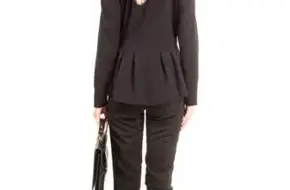-
Beijing, a city where ancient temples stand alongside futuristic skyscrapers, demands smart planning. Begin by deciding your travel season—spring (April–June) and autumn (September–October) offer mild weather, while winter (December–February) brings snowy charm but freezing temps. Summer (July–August) is hot but less crowded. For a first visit, 5–7 days is ideal to cover iconic sites without rush. Book accommodation near the Subway Line 1 or 2 (e.g., Dongcheng or Xicheng districts) for easy access to landmarks. Use apps like DiDi (ride-hailing) or Beijing Subway for affordable transit—get a transport card at airports for hassle-free commutes.
What are the must-see attractions in Beijing?
No trip is complete without The Great Wall—opt for Mutianyu or Jinshanling for fewer crowds. Dawn at Tiananmen Square followed by Forbidden City (book tickets online!) reveals imperial grandeur. For spiritual depth, explore Temple of Heaven’s ritual spaces. Modern icons like Olympic Park (visit the Bird’s Nest after dark) contrast with 798 Art Zone’s avant-garde galleries. Bonus tip: Visit Summer Palace on a clear day—rent a boat to glide under Longevity Hill’s pavilions.
Where should I eat authentic Beijing food?
Beijing’s cuisine is as bold as its history. Start with Peking duck—locals swear by Liangzhai (near Beihai Park) or Quanjude (a splurge). For street eats, hit Nashike Night Market (Zhahai Subway Station) for zhajiangmian (noodles in soybean paste). Vegetarian? Try Buddha-Jump-Over-Wall (a tofu hotpot near Nanluoguxiang) or Xibei Youjian (dumplings in Jingshan area). Pair meals with Douzhi (fermented soy milk) from a street cart—it’s an acquired taste!
Top Beijing Eats:
Dish Spot Location Peking Duck Liangzhai Near Beihai Park Zhajiangmian Nashike Night Market Zhahai Station Muslim-Style BBQ Hongyuan Ge Xinjiekou, Dongcheng How do I avoid crowds in Beijing?
Beat the rush by visiting Forbidden City at opening time (8:30 AM) or after 4 PM. For the Great Wall, go midweek—weekends draw Beijing residents too. Use the Panda Cam (online) to check crowds at Beijing Zoo. Evening strolls along Shichahai Lake (lanterns at night!) or morning tai chi at Ritan Park offer peaceful moments. Avoid Tiananmen Square on national holidays—it’s packed!
What hidden gems should I add to my itinerary?
Skip the tourist buses and uncover Beijing’s soul. Wander Hutongs (narrow alleys) around Nangluoguxiang—stop for jingtaiqi (claytoy) shows. In Fengqiao, visit Fahai Temple, a Tibetan Buddhist gem. For panoramic views, hike up Fragrant Hills in autumn for red leaves. History buffs will love Beihai Park’s hidden palaces and Yonghe Temple, China’s largest Lama temple. End with a drink at The Cloud Bar (36th floor, CBD)—Beijing’s lights will leave you speechless.
Slip into local life, savor the mix of old and new, and let Beijing’s layers unfold. As they say: “A lifetime in Beijing”—start your chapter!
-
When is the best time to visit Beijing for perfect weather? Beijing’s weather can swing from stifling summers to bone-chilling winters, but the sweet spot for most travelers is spring (April–May) and fall (September–October). During these months, daytime temperatures hover around 18–25°C (64–77°F), with low humidity and clear skies—ideal for exploring landmarks like the Forbidden City, Summer Palace, and Great Wall. Spring brings blooming cherry blossoms at parks like Yuyuantan, while fall paints the city in golden hues, especially in historic areas like Beihai Park. Avoid the peak heat of July–August (up to 35°C/95°F) and freezing winters (below -5°C/23°F), unless you’re after specific seasonal experiences.
What are the top seasons to avoid crowds in Beijing?
If you prefer fewer tourists, winter (November–February) and summer might surprise you. Winter sees fewer visitors, but be prepared for cold snaps—the Forbidden City’s ice-skating rink and snowy hutongs (narrow alleys) offer unique charm. Summer, despite the heat, has thinner crowds compared to spring and fall, plus you can cool off at temples like Yonghe Temple or escape to the countryside. Just note that July–August coincides with rainy season, so pack an umbrella. For shoulder seasons, late March–early April and late October–early November offer mild weather with moderate crowds.
Which months offer the best cultural festivals in Beijing?
Beijing’s calendar is packed with festivals. January–February celebrates the Lunar New Year with temple fairs, lion dances, and lantern shows. September–October overlaps with National Day (October 1), lighting up the city with parades and fireworks. For something more intimate, try Qixi Festival (July) for love-themed traditions or Mid-Autumn Festival (September/October) for mooncakes and tea ceremonies. Check local calendars, as dates shift annually based on lunar cycles.
When can I enjoy Beijing’s parks and historic sites comfortably?
For outdoor enthusiasts, spring and fall reign supreme. The Great Wall’s sections like Mutianyu are less treacherous without snow or scorching sun. Summer hikes risk dehydration, while winter visits require layering and ice-proof boots. In spring, rent a bike to cruise along the Long Corridor of Beihai Park, or take a boat ride on Kunming Lake in fall. Pro tip: Visit the Temple of Heaven early morning to catch stunning light and avoid midday crowds.
Is there an ideal time for foodie adventures in Beijing?
Anytime is great for food, but winter (December–February) is prime season for hearty dishes. Warm up with peppercorn-infused hotpot or zhengzong zaofan (sticky rice cakes). In fall, hunt for Peking duck at iconic spots like Quanjude or Bianyifang. Spring brings fresh jujube-stuffed jianbing (savory crepes), while summer is for cold noodle salads and ice cream from Qianmen. Street food thrives year-round, but avoid peak heat when markets like Wangfujing can feel stuffy.
Beijing Weather Snapshot
Season Temp (°C) Key Experiences Crowd Level Spring 10–25 Cherry blossoms, temple fairs Moderate Summer 25–35 Ice festivals, countryside escapes Low Fall 15–25 Golden foliage, National Day High Winter -5–10 Skating, hutong snow scenes Low Timing your trip to Beijing isn’t just about weather—it’s about matching your interests to the city’s rhythm. Whether you’re here for history, food, or festivals, Deep China Travel can craft an itinerary that makes the most of your season of choice. Trust us: Beijing’s magic changes with the wind!

